ATTN Coaches: Are You Throwing Dynamite In The Air & Expecting Rain?
What Deserves The Label: “Bro-science Fixed Mindset Garbage”?
I want to share a story…
Right before the Great Depression hit the Oklahoma panhandle, rain was plentiful, causing Doctors and Lawyers to quit their practices and join the ranks of farmers to buy land and plant crops that were being subsidized by the US government. In other words, the gold-in-them-hills was harvesting and selling wheat and other bumper crops.
Millions of acres of 6-foot high beautiful Buffalo blue grass were plowed under to make room for crops. Fast forward to the beginning of the Great Depression, the rain dried up, and so did the crops. Unbeknownst to the new farmers who moved to the area, typically rain was sparse in the location, and by coincidence, they had just experienced a rare wet 5-10 year period.
So now there’s NO rain. And you know the 6-foot high beautiful Buffalo blue grass they cut down? Well, it used to hold the soil down despite seasonal 60 to 70 mile-per-hour wind gusts. So NO crops are growing now. Grazing cattle have nothing to eat but tumbleweeds brought over by the Russians (people often sprinkled salt to eat them as well). The livestock soon get sick and die. Wind is eroding dry soil and tossing it up in the air. The drought is fatal for the majority who stay, while other smarter – in hindsight – individuals move west. Enter the “Dust Bowl”.
The farmers who stayed behind were so desperate for rain, they hired so-called rain experts to “create” rain. The bro-science at the time went that an explosion in the air could bring clouds, and with clouds, rain would fall from the sky. So what did these so-called experts do? They sold the idea that if they lit a stick of dynamite and timed the throw just right, they could get the explosion that would bring water.
…And doggonit, it worked on the rare occasion, convincing everyone that this was a predictable-enough strategy for “creating” rain. I know this sounds like a stupid idea, but you have to understand, the people were DESPERATE for rain. However, nobody paid attention to the countless other times that followed, where it didn’t work and people lost limbs, fingers, etc. from timing the lit dynamite wrong.*
(*By the way, the above passage – in which I paraphrased – came from interviewed first hand accounts in the book Dust Bowl: An Illustrated History. Fascinating stories of how a dust storm rolling in looked like a slow moving wet dog haired tornado turned on its side, miles high and wide. True story.)
So what deserves the label: “Bro-science Fixed Mindset garbage”?
Hitting “bro-science” is:
- Blindly trying methods, ignoring principles.
- Like throwing dynamite in the air and expecting it to rain.
- Running east looking for a sunset.
- Missing the forest for the trees.
- Shooting an arrow randomly and calling whatever you hit.
- A bad decision waiting to happen.
Urban dictionary defines “bro-science” as:
“Word of mouth knowledge passed off as fact, primarily among bodybuilders + weightlifters. Generally spouted most by guys who have used loads of steroids and are huge, have no idea what is happening to their bodies and then share that same cluelessness with others who make the false assumption that their experience means that they have knowledge.”
Furthermore, Bodybuilding.com defines “bro-science” as:
“Broscience is the predominant brand of reasoning in bodybuilding circles where the anecdotal reports of jacked dudes are considered more credible than scientific research.”
You can easily substitute “bodybuilders”, “weightlifters”, & “bodybuilding” in the above definitions with “baseball” and “softball” hitting coaches. It’s a Fixed Mindset. Believe it or not, I saw a comment on Twitter, with my own eyes, of a so-called hitting guru (I won’t mention him by name so as not to give him oxygen, but you would know him), claim what he teaches isn’t found in Science – Ha!! True story. He’s as fraudulent as those dynamite “rain men”.
Look, we have to be careful as coaches with the correlation equals causation link. Just because the dynamite might have worked on the rare occasion, doesn’t mean it will work bringing rain on a predictable basis.
REAL Science, the opposite of “bro-science”, is held to a higher standard. The Scientific Method, as a matter of fact. Sure, there’s Bad Science out there, but we’re looking for testing, experimentation, and research showing that correlation and causation of specific inputs are more predictable, not less. Just like how success leaves clues, so does failure.
A Growth Mindset coach will zero be hyper-focused on this. Sure there are 100’s of ways to teach hitting, but if you had the choice to eat tomato soup with a spoon, fork, or knife, which tool would you use to be most effective?
Teaching hitters is the same.
By applying human movement principles validated by REAL Science to hitting a ball, you’ll be eating tomato soup with a spoon. NOT shooting an arrow randomly and calling whatever you hit. And definitely NOT strategically throwing dynamite in the air hoping and praying the explosion will make it rain.
The above video and following Chapter are from the Introduction to my 2017 Amazon best selling book: The Catapult Loading System: How To Teach 100-Pound Hitters To Consistently Drive The Ball 300-Feet, which has amassed over 100 Amazon reviews with an average 4.3 out of 5-star ratings! Over 11,500 copies have been sold or downloaded. The Chapter topic? Growth v. Fixed Mindset coaches…enjoy!
“In times of change, learners inherit the earth, while the learned find themselves beautifully equipped to deal with a world that no longer exists.” – Eric Hoffe
Fixed Versus Growth Mindset Coaching
When it comes building consistently powerful hitters, this book will provide you with the mechanical pathway to get there. However, I think the most important aspect to coaching has to do with Mindset. Coaches can be split up into two categories:
- Fixed, or
- Growth Mindset.
…and which Mindset a coach falls into a majority of the time, can make or break a young athlete’s development. Don’t believe me? According to Dr. Carol Dweck, in her bestselling book Mindset: The New Psychology of Success,
“In a fixed mindset, people believe their basic qualities, like their intelligence or talent, are simply fixed traits. They spend their time documenting their intelligence or talent instead of developing them. They also believe that talent alone creates success—without effort.”
Here are some things you hear FIXED Mindset coaches saying,
- You can’t teach a Little Leaguer to hit like a Major Leaguer because they aren’t strong enough.
- Hand speed can’t be coached.
- Natural hitters are just born.
- Hitting is subjective and is different for everybody (this leaves them off the hook if player doesn’t succeed with their guidance).
- The greatest hitters just have great hand-eye coordination.
- That 12u 100-pound hitter can consistently hit the ball 300-feet because they’re hitting with a HOT bat.
- He/She can hit the ball hard and far because of their body mass.
All of those are to the contrary of Dr. Dweck’s definition of a Growth Mindset coach:
“In a growth mindset, people believe that their most basic abilities can be developed through dedication and hard work. Brains and talent are just the starting point. This view creates a love of learning and a resilience that is essential for great accomplishment.”
These coaches find a way. They ask the right questions. They ask, “Why not?” They don’t rest on elite-level playing or decades of coaching experience. The objective of a Growth Mindset coach is to learn human movement principles first, or the “rules”. Then, design methods to stay within those lines. Predictably positive hitting results don’t work the other way around. You’ll learn more about this in CHAPTER 1.
I’ll let Billy Murray give Growth Mindset coaches a heads up in dealing with Fixed Mindset coaches:
“It’s hard to win an argument with a smart person, but it’s damn near impossible to win an argument with a stupid person.”
I’m not saying Fixed Mindset coaches are “stupid”. What I am saying, in my experience in dealing with them, is they let their ego and pride get in the way of helping hitters get consistently better. They make emotional arguments, NOT rational. Here’s more evidence from Henry Ford:
“If you think you can do a thing or think you can’t do a thing, then you’re right.”
One puts the forest before the trees (versus missing the forest for the trees), while the other is swatting a piñata with one eye blindfolded and both arms pinned behind their back! Trust me, I get it. We all want to be heard and validated as being knowledgeable in a subject, but seemingly high credibility in the wrong place is misleading for everyone involved.
Some go to extreme lengths to IMMEDIATELY make their presence known. Here are some Fixed Mindset saying tip-offs:
- “I’ve played [X-number of] years professionally and I should know.”
- “I’ve been coaching for 30+ years, and this is why you should listen to me.”
- “I’ve studied millions of hours of video analysis of only the best hitters. I know what I’m talking about”
- “I’ve put a lot of work into the cages, and that’s how I know what I’m talking about”
Don’t get me wrong, the last two points have their place and can be effective in learning and seeing successful movement patterns, BUT massive effort going in the wrong direction can be gross negligence. Besides, it takes A LOT of effort in the cages and hours of video analysis to stumble onto the right answers. The problem I have with this process is it takes too dang long! Especially for the new coach. Rest assured, I have a more elegant solution that will dramatically cut your learning curve in half! You’ll know what to look for, so you can SUPERCHARGE your time in the cages and when doing video analysis. You’ll read about this in CHAPTER 2.
Willful ignorance.
As you probably already know, coaches defend their hitting philosophy and theories to the death, even if human-movement principles validated by REAL science, reveal the opposite. Just like in Politics and Religion. I mentally play the “What if I strip them of…” game with Fixed Mindset coaches. WHAT IF this person NEVER…
- Played in the Big Leagues…
- Coached for 30+ years…
- Studied millions of hours of video…
- Put a lot of work into the cages…
…IF we stripped them of their primary credibility indicator(s), THEN I ask:
- What do they actually know and why?
- Who or what have they studied? (i.e. Physics, Bio-Mechanical, Psychology, Exercise Science sources? Not baseball or softball)
- What kind of consistent or inconsistent results do they get with their hitters? (Truthfulness in scale is key). Look, a blind squirrel can find a nut every once in awhile, but it’ll inevitably starve.
Don’t worry, we’ll get deeper into the Credibility Fallacy in CHAPTER 3, so you can navigate the red flags effectively. Look, Fixed Mindset coaches are stuck, and what I find is they regurgitate the same information they’ve been taught in the past without question. They may even say their hitting philosophy is a science, but it’s not. It’s a pseudo-science, or what I like to call a “because I said so ‘bro-science'”. Their copy and duct-taped together hitting philosophy reeks of uncertainty. It’s a paper tiger. A house built on sand. Their hitters deserve better information…and can be better. We’ll get more into that in CHAPTER 4. Consider one of my favorite quotes by Dan Farnsworth:
“Doing a thing and understanding a thing do not automatically qualify you to teach a thing.”
It’s so true! I can tell with 100% confidence that I have not:
- Played Professional baseball,
- Coached for over 30 years (yet!),
- Studied millions of hours of only the best hitters on video, or
- Put in as much work in the cages as others say they do…
So, why listen to me? Because of:
- What I actually know,
- Who and what I’ve studied (outside baseball/softball circles), and
- The predictably positive results my hitters are getting.
We’ll drill deeper into these points in the following CHAPTERS. What I think is VERY IMPORTANT to know, for those who never played ball past Little League or 12u softball, is that you too can be a hitting expert. Yes! You don’t need professional playing experience (or even college!). You can be new to coaching. You don’t have to clock in millions of hours of video analysis. You can even be new to instruction.
All you need is a passionate curiosity to learn and apply the human-movement principles that are validated by REAL science, NOT “bro-science”, to hitting a softball or baseball. I’m going to teach you how to conduct fool-proof swing experiments, so that you can use your findings to show people who won’t take you seriously. You’ll learn my swing experiment blueprint in CHAPTER 4. And I’m going to break it down for you, so don’t worry if you didn’t do well in science class.
CHAPTER 5 will take you through the science of springy fascia and spinal-engine-mechanics. This is the WHY behind the methods we discuss in the later chapters. You can skip this one, but please return to it later, so you have ammunition for Fixed Mindset coaches who won’t believe the predictably positive results your hitters are getting.
CHAPTERS 6 through 11 will take you through the practical methods my hitters are using to consistently triple, or at least double, their body-weight in batted ball distance.
Lastly, CHAPTER 12 will walk you through how to train these newly-learned hitting techniques. I believe the training is as important, if not more critical, than the mechanics you’ll be learning in this book. To give you an example of the value, I had a third-year pro-hitter drive up from San Diego (about a 7-hour drive, one way, without running into Los Angeles traffic), comment that he thought the training by itself was worth the trip! And he spent a small fortune in time and money to work through a whole weekend with me.
What You’ll Learn
Here’s what you’re going to learn in the upcoming pages:
- Why hitting philosophy fails and principles that are validated by science succeed.
- Why you shouldn’t make video analysis FIRST-priority, when modeling elite hitters.
- What 30+ year coaching experience and pro players won’t tell you, and how the information source you focus on can dramatically cut down your learning curve.
- How to become a hitting expert when you’ve never played higher than Little League.
- There’s a BIG advantage to learning how the body actually loads (and it’s not what you’re thinking).
- A simple method that helped Babe Ruth to consistently crush the ball with some of the heaviest bats ever used.
- Elite-hitters revealing ways to hit balls with High-Exit-Speeds, swing after swing, using three elements even a 4-year-old can understand.
- At last, the secret to transitioning grooved batting practice swings into game at-bats is revealed.
And to reiterate what’s new in the 2nd edition of this book:
- This Preface addressing major objections to the first edition,
- “How to drill” section at end of each Principles Chapter complete with drill video, sticky coaching cues, and STEP-BY-STEP breakdown to teach,
- Appendix Chapters covering: science of successful learning, how to transition practice into game swings, is rotating back hip through zone necessary for power, how to smooth out ineffective swing paths, & hitting low in the zone and to opposite field,
- Updating of each Chapter, new sticky coaching cues, metaphors to help get concepts, condensed paragraphs (more formal paragraph structure and less like I write for the blog), less bold font, and fixing of minor spelling mistakes,
- And lots more links to free blog posts to see elite MLB hitting examples applying the principles.
WHY is this Important to you now?
There are four reasons…
Most “hitting stuff” we’ve learned is DEAD WRONG. It’s based off philosophy, theory, and “bro-science”, and with the technology available today, we can test the value of those hitting philosophies.
Nowadays, everyone seems to be Hitting Guru #57. How do we differentiate between an effective versus an ineffective approach? This is important because it’s not how PRO someone is, how many years of coaching they’ve accumulated, how many man-hours of video analysis they’ve done, or even how many hours of lessons they do in a given year. There are hitting academies out there teaching wonky information, working with literally thousands of hitters in a year, and one parent would be better off wiping their butt with the money. Don’t worry, we’ll help you navigate these waters. You can’t argue with REAL science and predictably positive results.
“Confusion” between mechanical causation equaling correlation. Can you put backspin on a ball by swinging down on it (i.e. negative barrel Attack Angle)? Yes, you can. But, will the hitter consistently get the ball in the air that way? No. Unless you’re playing slow pitch softball. In the case of hard-ball and fast-pitch softball, swinging down does not consistently put the ball in the air with authority, and IS NOT what the best are REALLY doing.
Big difference between what’s “real” and what’s “feel”. When Mike Trout says he works at ‘getting on top of the ball’, that doesn’t mean Johnny’s coach should go out and share with his team this method. In fact, Mike Trout says this to himself to protect his swing from HIS natural tendency to upper cut too much, like he says to ‘chicken wing’. The cues that MLB and professional hitters use are often lost in translation to the coach, and inevitably with the younger-end user. We can use these cues too, but it depends on specific hitting adjustments. You’ll discover what’s referred to in psychology as “Paradoxical Intention” in the Appendix Chapters. This will teach how to make educated hitting adjustments.
Is the Information in this Book for you?
First, we WILL NOT be talking about:
- ‘Squishing bugs’,
- ‘Swinging down on the ball’, OR
- ‘Loading & exploding the hips’ (this is harmful to your lower back by the way).
Second, this is specifically about how to apply human movement ‘rules’ to hitting a moving ball, and not about hitting ‘philosophies’, ‘theories’, or ‘bro-science’ that DO NOT predictably work in LIVE case studies at scale.
Third, the information in this book is based on the success my personal hitters have had both online and locally, plus literally thousands of coaches who’ve duplicated the results, if not bettered them, by using this system.
The House Rules
Enough of what this book is promising, now let me be clear about what it’s not…
- No “get powerful hits, quick”.
- No “do nothing, and crush the ball”.
- My results aren’t remotely typical.
- Most people who buy ANY “consistent power” hitting product, will not have success with getting consistent power in their hitters.
I addressed this previously, but it bares repeating…
Some of my 12u hitters and younger, weighing around 100-pounds, don’t start consistently driving the ball 300-feet right away. Some take 2.5 years to get to consistency, whereas before they do it “every once in awhile”. Other hitters, although rare, achieve this in less than 6-months. It depends on good old fashion effort, work ethic, and the athlete’s ‘learn-ability’.
I encourage my hitters to work hard on the things we go over, and to keep on trying even after hitting major obstacles. Most young hitters don’t do that. They just show up for a lesson or gather information and “get ready” to work…or they throw in the towel and quit at the first bump in the road. It took a lot of hard work for my hitters to start seeing favorable hitting outcomes. Interestingly, it was the work with my hitters that gave me the inspiration to write this book.
The bottom line is, I have no idea what your results may or may not be. And it’s not my place to try to predict that. Your success is up to you, as always.
In following, you’re going to discover why the coach who understands human movement principles, can successfully select his own hitting drills. But the coach who tries drills, ignoring principles, will have trouble optimizing hitters.
- Fix Late Swings Fast: 2025 Pitch Recognition & See-Decide-Swing Training for Youth Baseball Power Hitters - October 6, 2025
- Safe Youth Weighted Bat Training: Proven Overload/Underload Drills to Increase Exit Velocity in Games Starting Tonight - September 29, 2025
- AI Coaching Course 2025: Youth Baseball & Softball Practice Plan + Off-Season & In-Season Workout Builder Fast - September 23, 2025



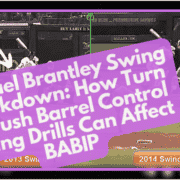
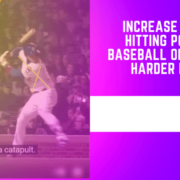

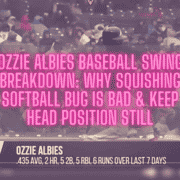

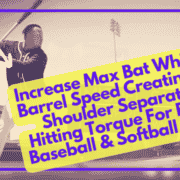
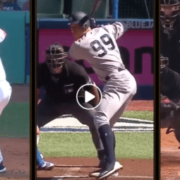
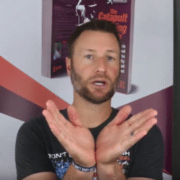



Leave a Reply
Want to join the discussion?Feel free to contribute!